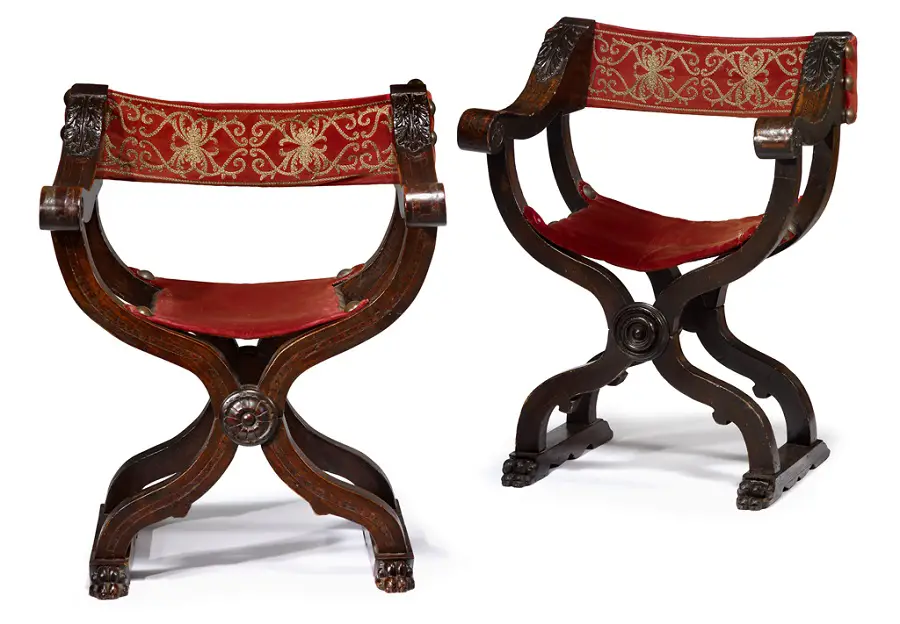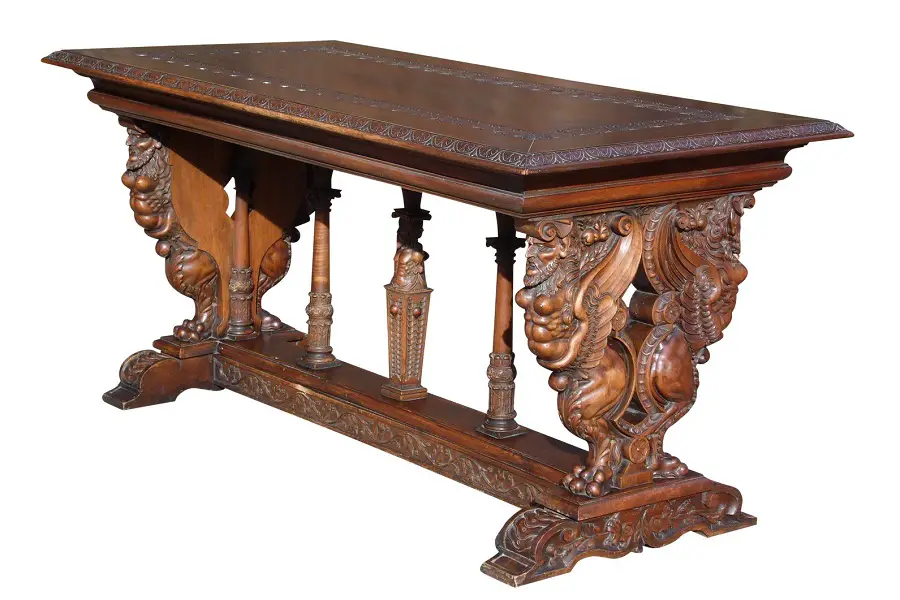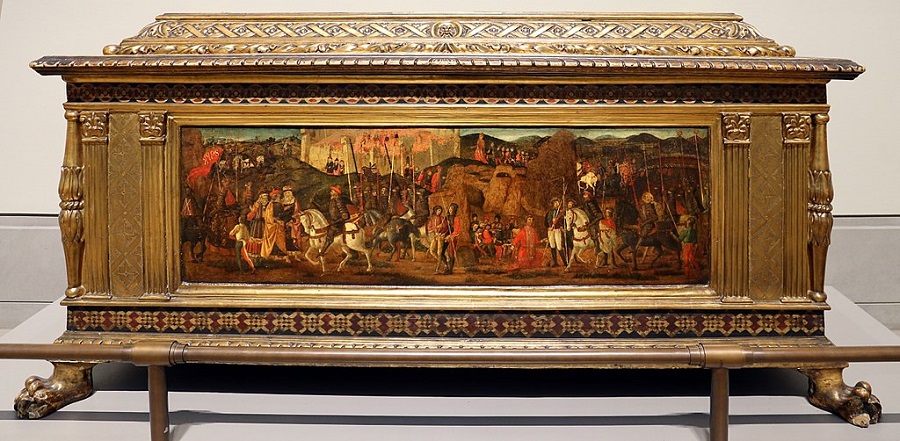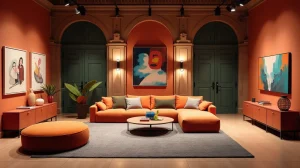The Renaissance is identified with the unique artistic works of Michelangelo and Leonardo da Vinci's openness to science. These are two landmarks that provide the complete picture of the period. Despite the strong support the artists received from the church, the period is one of breaking away from ecclesiastical dogmas and rediscovering earthly happiness. It is seen as a bridge between the Middle Ages and the modern pre-industrial era, when the arts flourished and the emphasis was on the aesthetic rather than the functional. A period of such notable transformations could not fail to leave its mark on the furniture, which became much more ornate and richer, often created to support the architecture of the house.

The Italian Renaissance, the beginning of a flourishing period
The Renaissance began in Italy, in Tuscany, and is linked to the city of Florence. The name revival was first used by the painter, architect, writer and historian Giorgio Vasari about Giotto's way of painting saying that it is a rebirtha rebirth. French historian Jules Michelet uses the term in his book History of France (1835), using it to describe the cultural changes of the time. The term has since been adopted to define the period of these changes.
The Renaissance movement spans the 15th and 16th centuries and is divided into three distinct periods:
- Early Renaissance, between 1400 and 1500
- Renaissance at its height, 1500-1540
- Late Renaissance, 1540-1600
After a period dominated by wars and deprivation, the renaissance comes with a new breath of fresh air, a period of flourishing, when crafts flourished, the church invested in the arts and artists, new trades and a new breed of bourgeoisie emerged, without noble titles but with wealth and a desire for wealth. Austerity Gothic style It is gradually replaced by richly ornate architecture with Roman and Greek influences, richly painted walls and ceilings, carved and inlaid furniture.
From Italy the style spread throughout Europe, first to France, then to England, the Netherlands, Spain and the Germanic countries. Initially very similar to the Italian style, each country gradually contributed to the development of the style, giving rise to specific styles such as the Dutch or Flemish revival. The influences can also be seen in the furniture.

Revolutionary furniture changes
Until the Renaissance movement, furniture focused on functionality, was quite small in number of pieces and was mostly found in royal palaces or those of the nobility. Italian Renaissance craftsmen came up with new, richly decorated and ornate pieces. Representative examples are the highly carved fronts of the cupboards, the square tables on large turned legs, the high chairs with square seats and turned legs, the decorated dowry chests that became pieces of furniture (caisson) highly decorated, the Roman-inspired cross-legged chairs (Dante or Savonarola), canopy beds.
Cassone - the marriage chest - became one of the most desirable pieces of furniture, even if it was expensive. They took the form of a sarcophagus or rectangular box, and were all the more ornate the wealthier the owner. Initially, their purpose was to store the dowry of the bride-to-be, but gradually they became pieces of furniture or simply decoration.
The Dante chair, despite its simplicity, was also decorated according to the social position of its owner. While initially the backrest was simple and the seat was made of leather, towards the end of the 16th century the backrest and seat began to be upholstered with valuable materials such as silk, tapestries or leather. Both fixed and folding versions were available, Dantesque being a fixed version with arms for the well-off
The pieces of furniture were decorated with carvings resembling the scenes painted on ceilings and walls, with masks, human figures, gargoyles, lion heads, mules, pilasters or caryatids and were supported on lion paws. Wealthy families put their coat of arms or coat of arms on the furniture. Sometimes they were painted or gilded, and tabletops could be made of marble. Around the same time, in Italy, the process intarsia in which pieces of wood of different colors and species were inlaid into the wooden tabletop to give it a mosaic look.

Types of wood used
In Italy, oak Gothic period was replaced by walnut woodThe more precious and noble, it became the wood of the period. France and other countries took up the idea, except for England, which continued to use mainly oak for furniture. In the Netherlands, in addition to walnut and oak wagons brought from the colonies. In Italy, cypress was also used to build chests. Also used in Italy chestnut wood.
The wood was inlaid with ivory, precious stones, gold, marble or other precious materials. It was richly carved and gilding was used to highlight the carving. Special inlaid patterns adorned the tabletops.

The Renaissance movement was perhaps the most important cultural movement of the second millennium. The changes came from all directions, spread across Europe and the Orient and transformed the way we looked at art and life. As well as flourishing arts and crafts, furniture became much more present in homes, sometimes as decorative objects. Italian craftsmen introduced new techniques for making pieces of furniture which were taken up and perfected. Some specific elements co-existed with those of other styles from the 17th century, and in the 19th century the style experienced a revival with the advent of Neo-Renaissanceism.




































Is this kind of furniture still made, or just museum objects?
It doesn't exactly follow Renaissance models, but heavy, carved walnut furniture with lion's paws is made. Such factories are mainly in the north-western quarter of the country, and the customers are mainly countries in the former Soviet area and Arab countries. The difference is that the carving is done on CNCs; carving workshops in factories are very rare.